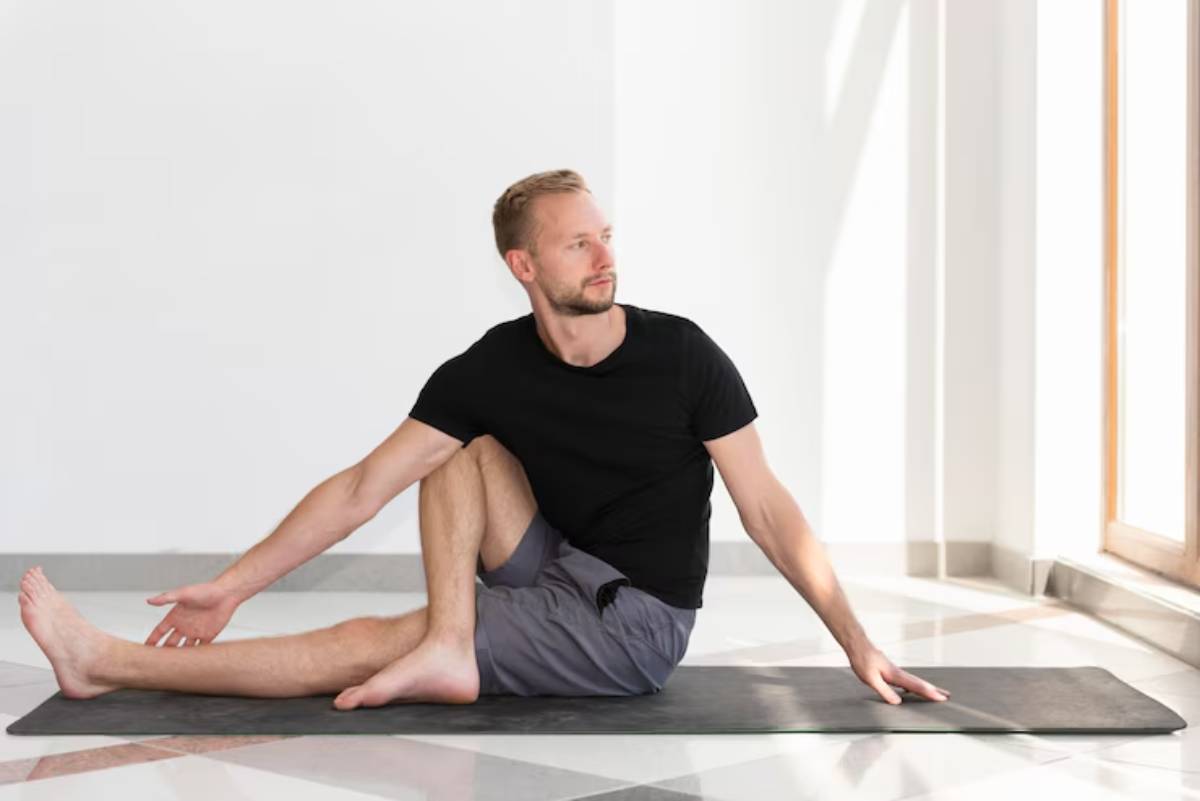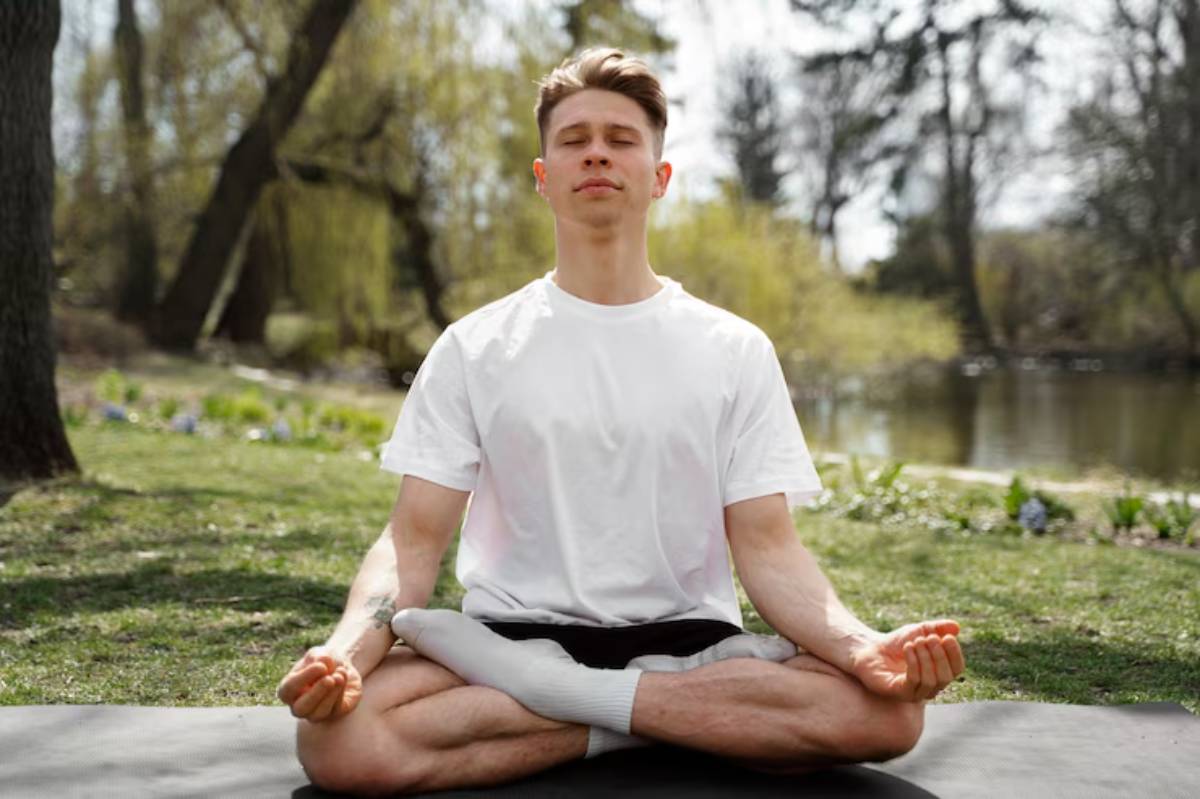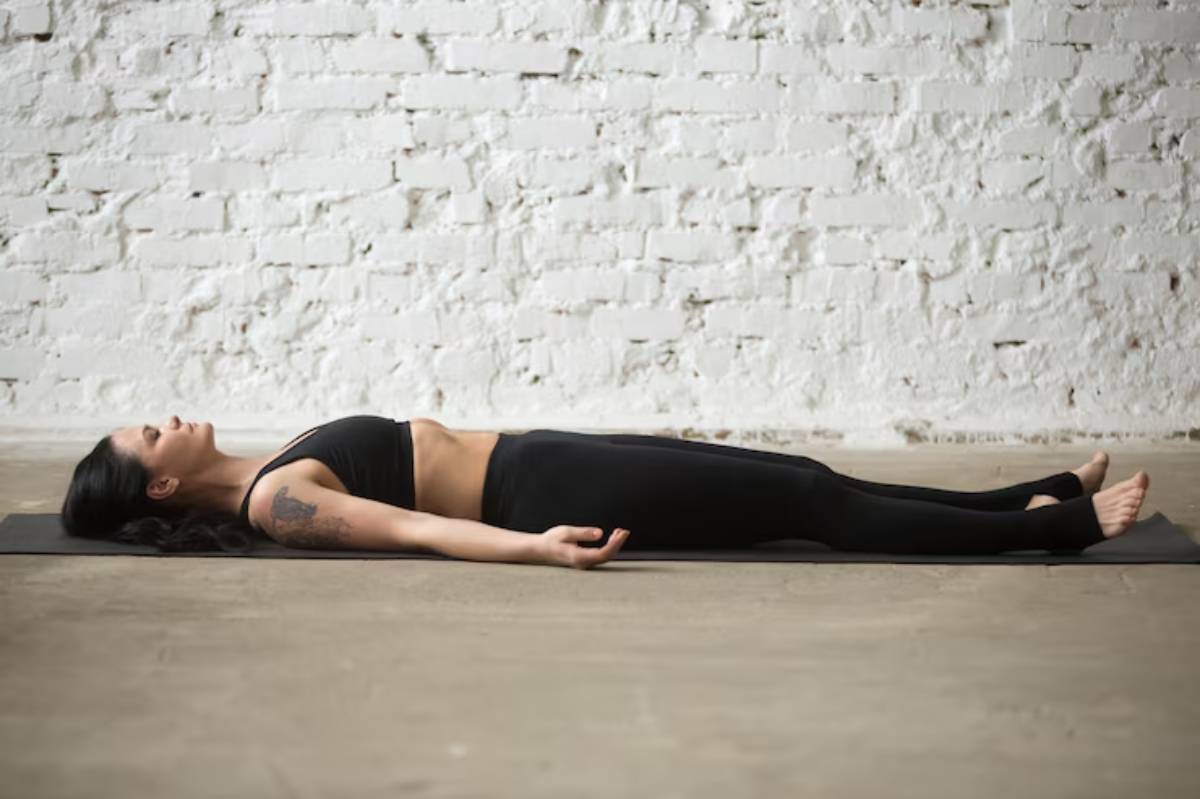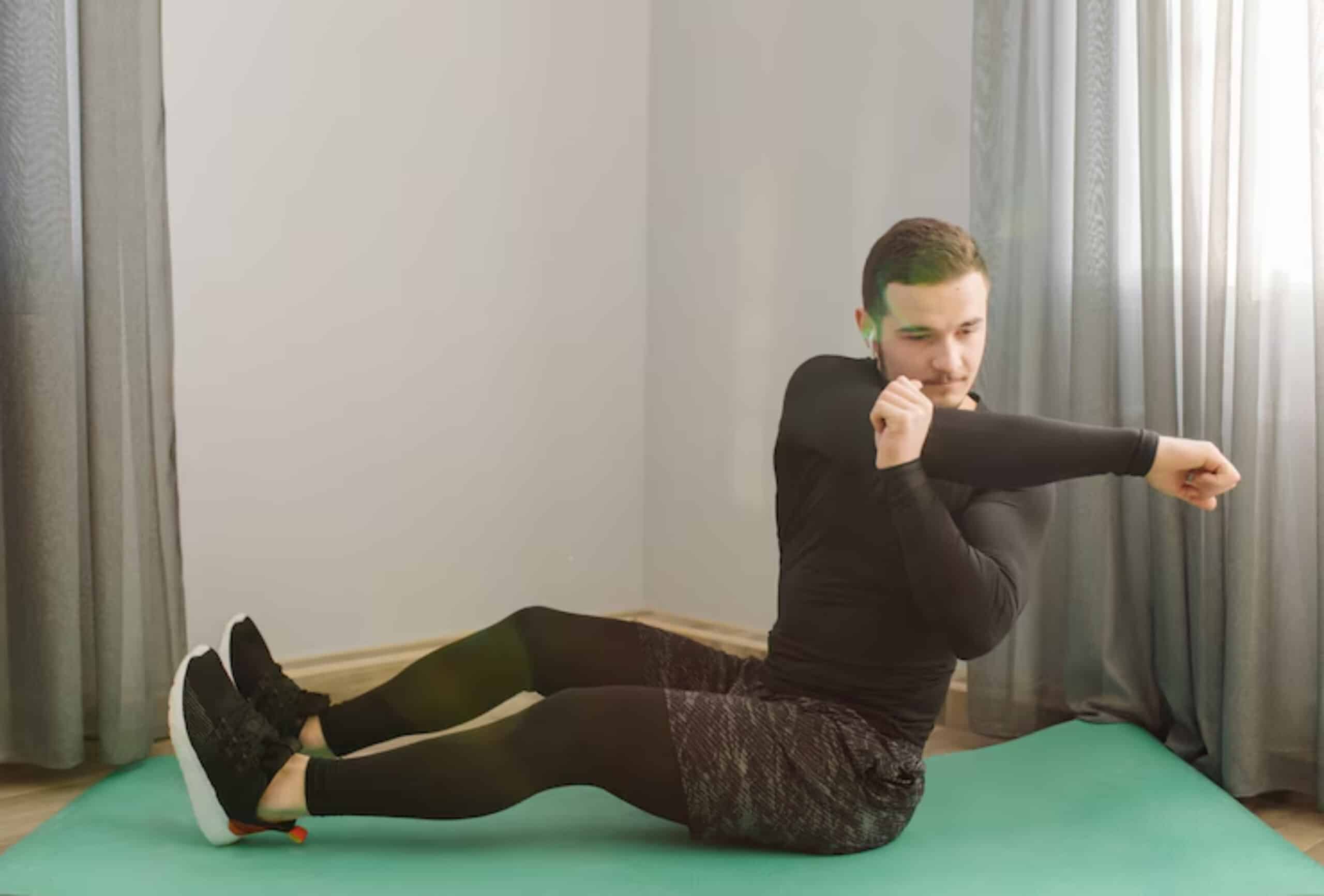
Thoracic Spine Mobility With Twisting Flows
Have you ever tried to turn your head while reversing your car, only to feel a tight pull in your upper back? Or felt stiff when twisting during a workout or yoga class?
You’re not alone, and the likely culprit is limited thoracic spine mobility.
The thoracic spine (the mid-back region between your neck and lower back) is often overshadowed by its louder neighbours, but it plays a pivotal role in posture, breathing, shoulder health, and spinal function. When it’s restricted, other parts of your body overcompensate—and that’s where discomfort and injury creep in.
In this guide, you’ll explore:
- What thoracic spine mobility is and why it matters
- The consequences of poor rotation and posture
- A practical, breath-driven twisting yoga sequence to restore range
- Science-backed tips to safely improve your mid-back flexibility
Whether you’re a yogi, lifter, desk-dweller, or weekend warrior, this post will help you unlock a healthier, freer spine—one twist at a time.
Understanding the Thoracic Spine and Its Role in Movement
What Is the Thoracic Spine?

The thoracic spine consists of 12 vertebrae (T1–T12) in your mid-back. It connects to your ribs and supports your upper body.
Key functions include:
- Enabling rotation and extension (twisting and backbending)
- Supporting healthy breathing mechanics
- Providing stability for your shoulders and arms
Why Is Thoracic Mobility Often Limited?
The modern lifestyle is brutal on your spine. Think about it:
- Slouching over laptops and phones
- Long commutes with poor posture
- Overtraining the chest or shoulders in the gym
This leads to:
- Rigid mid-back muscles
- Compromised spinal rotation
- Poor breathing and core activation
- Compensation from the neck and lumbar spine
Signs You May Need Thoracic Spine Mobility Work
You might have a tight thoracic spine if you experience:
- Shoulder impingement or pain
- Limited twisting range in yoga or sport
- Neck stiffness from poor rotation
- Slouched upper posture (“text neck” or “kyphosis”)
- Shallow breathing patterns
Want to test it? Try rotating to look over your shoulder while seated. If your shoulders move more than your ribs, you may be compensating with your neck instead of using your thoracic spine.
How Yoga Spine Rotation Enhances Mobility Safely
Yoga is one of the most effective and joint-friendly ways to increase thoracic mobility. Here’s why:
1. Twisting Movements
Yoga encourages controlled spinal rotation with breathing, which lengthens and strengthens the small stabilising muscles around your vertebrae.
2. Integration of Breath
In yoga, you pair twists with deep, rhythmic breathing. This improves rib cage mobility and engages the diaphragm—a key thoracic stabiliser.
3. Full-Body Flow
Unlike isolated stretches, yoga moves your entire kinetic chain, ensuring the thoracic spine isn’t forced or overstrained.
4. Stress Reduction
Chronic stress affects posture and tightens the thoracic area. Twisting flows relieve tension and encourage parasympathetic (rest-and-digest) activation.
A Complete Mid-Back Mobility Sequence (Yoga Twisting Flow)
Try this 15–20-minute sequence 3–5 times per week. It’s gentle, scalable, and requires minimal space.
Warm-Up: Mobilise and Prepare (5 minutes)
1. Cat-Cow with Thoracic Focus
- Inhale: arch the spine and lift the chest.
- Exhale: round the upper back fully.
- Do 6–8 slow rounds.
2. Thread the Needle
- From all fours, slide one arm underneath and twist gently.
- Stay for 5 breaths on each side.
- Great for thoracic and shoulder release.
Main Flow: Twisting & Expanding (15 minutes)
3. Revolved Low Lunge (Parivrtta Anjaneyasana)
- Step right foot forward, left knee down.
- Twist over the front leg.
- Optional: lift the back knee to intensify.
- 5–8 breaths per side.
4. Revolved Chair Pose (Parivrtta Utkatasana)
- From the Chair, bring palms together and twist over one knee.
- Keep knees aligned—don’t let one creep forward.
- Use breath to deepen the twist.
5. Supine Windshield Wipers
- Lie on your back, knees bent, feet wide.
- Gently drop knees side to side.
- Mobilises the spine and hips together.
6. Revolved Triangle Pose (Parivrtta Trikonasana)
- From standing, step one foot back, square hips.
- Lengthen the spine and rotate over the front leg.
- Place hand on shin, block, or floor.
Cool Down: Restore and Integrate (5–8 minutes)
7. Reclining Twist (Supta Matsyendrasana)
- Lie down, bring one knee across the body.
- Keep the opposite shoulder grounded.
- Option to extend leg for deeper stretch.
8. Legs Up the Wall with Arms Overhead
- Restorative inversion that decompresses the spine and encourages thoracic expansion.
- Hold for 3–5 minutes, focus on breathing into your ribs.
Using Breath to Deepen Thoracic Twists
Inhale = lengthen

Every inhale creates space between vertebrae. Visualise air moving into the ribs and mid-back.
Exhale = rotate
As you exhale, gently twist further—never forcing. Use breath to guide the motion, not momentum.
Pro Tip: If you can’t breathe easily in a pose, back off slightly. Mobility is built with patience, not pushing.
Tools & Props That Help
- Yoga Block: Helps support the bottom hand in twists (like Revolved Triangle).
- Strap: Useful if tight shoulders limit your arm position.
- Wall: Practice standing twists with your back to the wall to maintain upright posture.
Scientific Backing for Thoracic Mobility Work
Studies show that improving thoracic spine rotation can:
- Reduce shoulder injuries in overhead athletes
- Improve postural alignment and lung capacity
- Enhance spinal load distribution during movement
Source: McGill S “Low Back Disorders”, 2016; Hibbs et al., “Core Training Principles,” Sports Medicine Journal.
How This Benefits Other Areas of Fitness
Improving mid-back mobility doesn’t just help with yoga poses—it has ripple effects:
- Lifters can rotate better in cleans and presses
- Runners improve upper-body mechanics and efficiency
- Desk workers experience less neck and shoulder tension
- Parents can bend, lift and twist with less discomfort
Real Story: Clara’s Mid-Back Breakthrough
Clara, a 36-year-old graphic designer, struggled with tension headaches and a forward-hunched posture.
After adding a 10-minute thoracic twist flow to her morning routine, she reported:
- Fewer headaches
- Improved focus at her desk
- A noticeable lift in her posture and mood
“The twists felt awkward at first, but now I feel lighter and more spacious in my body.”
Helpful Integration Tips
- Add twists to your warm-up before workouts or yoga classes.
- Pair with breathwork to amplify results (e.g., 4-4-8 breathing while twisting).
- Avoid forcing—build mobility gradually.
- Track progress by noting range of motion or tension changes over time.
Looking for a full-body routine that builds on this? Try Improve Shoulder Mobility With Yoga for upper-body freedom or Yoga Drills for Hips, Knees, and Ankles for a solid lower-body complement.
Conclusion: Twist Your Way to Freedom
Your thoracic spine holds the key to pain-free movement, better posture, and enhanced breathing. With yoga’s intelligent sequencing and breath-centric approach, you can:
- Release mid-back tension
- Improve rotational strength
- Support your shoulders, neck and core
Instead of pushing harder, twist smarter. Integrate these gentle yoga spine rotation drills and discover how a mobile thoracic spine transforms your performance and wellbeing.


